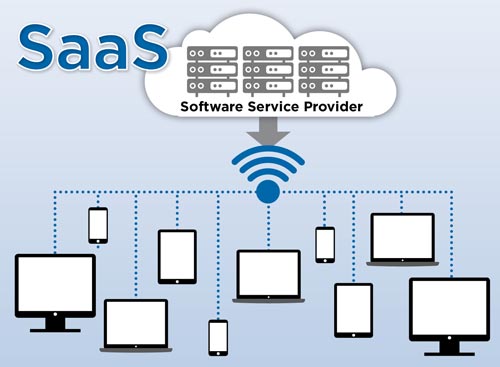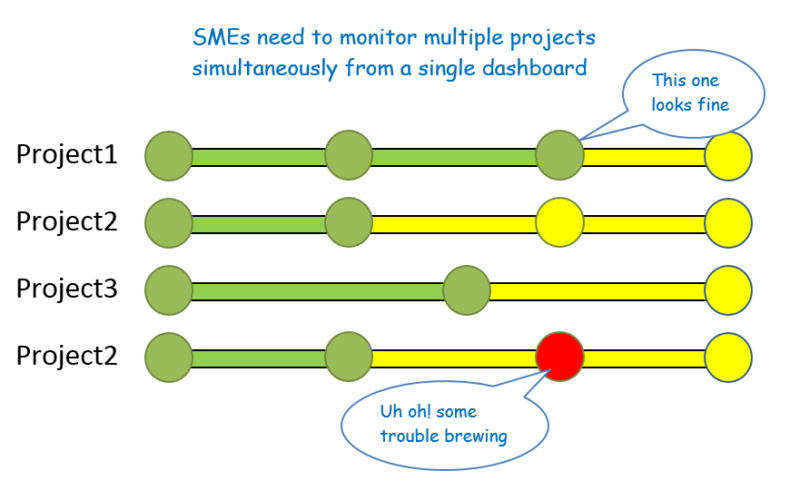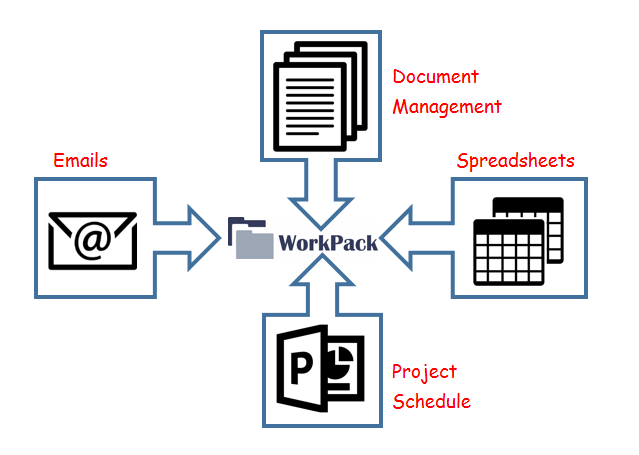Infrastructure projects are usually quite complex, involving several stakeholders even in smaller projects.
For example, even construction of a house involves – architect, engineering consultants, government authorities (for approval), construction contractor, several material suppliers, several subcontractors for – electricals, plumbing, painting etc.
Project management for large infra projects
Bigger projects are even more complex. For example, building a processing unit within a refinery amounts to tens of thousands of activities to be managed.
With such degree of complexity, project managers of large infra projects have traditionally depended on sophisticated project management tools for planning, cost control, progress tracking etc.
For the large infrastructure projects, the return on investment (ROI) for project management software has typically come from –
- Cost savings from reduced manual efforts, increased visibility etc.
- Opportunity costs from delays or budget overrun that may occur without proper cost control or progress tracking tools
With such strong ROI drivers, the managers of large Engineering & Construction (E&C) projects have frequently relied on traditional project management software packages.
Project management software for smaller infra projects
But the managers of smaller projects have usually shied away from making heavy investments in project management software platform for the following reasons –
- Lower complexity of smaller projects doesn’t necessarily warrant use of a software
- Lack of clarity about the return on investment (ROI) in project management software
- Hesitation to invest in new technology
It is true that a software really isn’t necessary for managing very small projects. But the decision to use or not use any software platform should be based on the ROI calculations.
So let’s see how we can estimate ROI for use of project management software in the smaller infra projects.
Smaller project, smaller investments
Like many other things, software is also being democratized over the years.
A few years ago, implementing a sophisticated project management software platform required the purchase of software licenses, servers, databases and an IT team to manage them all.
So the software was affordable and accessible only to large enterprises.
Now, the widespread reach of the internet has changed it all.
A sophisticated software package installed on a remote cloud server can be accessed by hundreds of thousands of similar companies. They access this software as a service over the internet (SaaS).

Cost of servers, databases, IT management, security solutions gets distributed to all users along with the benefits of the software.
So managers of small projects no longer need to make large IT investments. They can get the benefits of enterprise grade software at a fraction of the cost with cloud hosted solutions.
Tracking multiple simple projects instead of a single complex project
A large infra project usually means a large scope of work (SOW), a complex project schedule and multiple levels of team hierarchy. But sometimes even a small activity from this large SOW can turn into a bottleneck which can cause the whole project to be delayed.
Costs of delaying a large project can be very high. Hence the managers of these projects regularly want to track all activities and their progress in great detail.
So their objective of using a software is to track a single big project in great detail.
However, in case of SMEs, project managers are usually tasked to oversee a large number of small projects.
Small projects are usually not very complex and hence don’t need detailed monitoring.
But a when overseeing a large number of projects simultaneously, project managers want a software that will proactively alert them in case anything goes wrong in any of those projects.
So for SMEs, a project management dashboard should list all the ongoing projects with their status and highlight if any of those projects are facing any issues.

Cost savings from automation
A project management software is useful only if it makes the project manager’s job easier.
Project managers at SMEs who manage multiple small projects, spend a bulk of their time in tracking all these projects and then preparing reports for all stakeholders and management.
Since the nature of these project is quite similar, the tracking and reporting process can be standardized and automated using a software.
Time saved by automation directly translates into cost savings attributed to the software.
Opportunity costs
Using a project management software can save time and efforts.
But on the other hand, the absence of a software platform can actually lead to problems that add to your project costs.
- If all your projects don’t get properly tracked and some work gets delayed, the cost of that potential delay is an opportunity cost for not using a software.
- Similarly, problems like miscommunication of project documents, data loss, excess spending etc. which can potentially arise out of lack of a tracking mechanism, can also be attributed to opportunity costs.
So you can list all the problems that you might face in absence of a software platform. Then estimate the costs of those problems, along with a probability of each scenario.
A cumulative value of costs of a problem multiplied by probability will give you an estimate of the opportunity costs of not using a software platform.
Overall ROI
If you add the values of cost savings and opportunity costs, that should give you the overall value of having a software platform to manage all your projects.
You can estimate your overall investments in the platform by putting together the costs of software, hardware, training, time spent etc.
The ratio of the ‘software value’ to ‘investment in the software’ will represent the return on investment (ROI).
But be careful not to compare apples with oranges.
So if your investment is calculated on annual (per year) basis, you should also calculate the software value in same terms.
Or if you are considering lifetime costs of the software, compare them with lifetime value.
ROI with WorkPack
Most of the project related work is either done or communicated through emails, different types of documents and spreadsheets. Hence it is important to track emails, documents, spreadsheets etc. in order to track actual project work.
WorkPack is a fully integrated project management platform that connects – project schedule, emails, spreadsheets and document storage on one central platform.

These are the most critical components of tracking project progress. Having them on a single platform is making it easier for project managers across different industries to track and manage their engineering and construction work.
And since WorkPack is able to connect ALL the important pieces of the puzzle together, it doesn’t leave any room for any kinds of opportunity costs or lost value.
In other words, WorkPack will ensure the maximum ROI that you can have for a project management platform.
But you don’t have to take our word for it. Find out for yourself what WorkPack can do by setting up a free account for your team.
Let us know in case you need any help or if you would like to schedule an online demo for your team.

No Comments